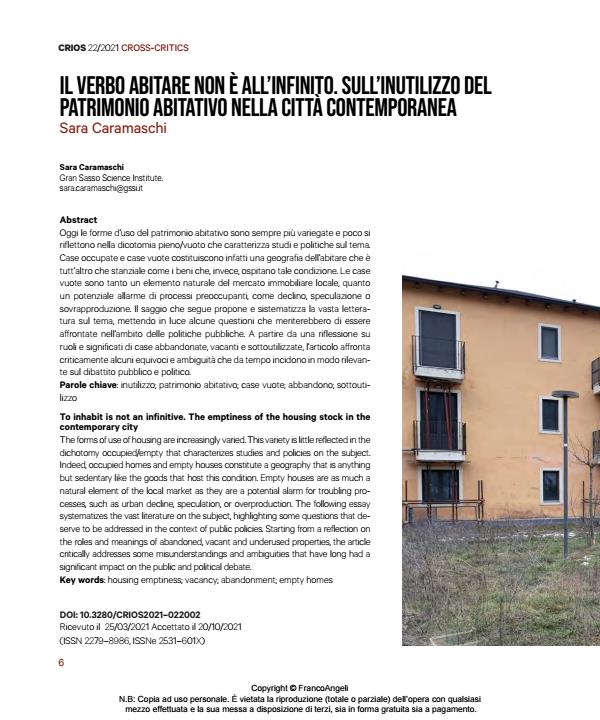To inhabit is not an infinitive. The emptiness of the housing stock in the contemporary city
Journal title CRIOS
Author/s Sara Caramaschi
Publishing Year 2022 Issue 2021/22
Language Italian Pages 10 P. 6-15 File size 498 KB
DOI 10.3280/CRIOS2021-022002
DOI is like a bar code for intellectual property: to have more infomation
click here
Below, you can see the article first page
If you want to buy this article in PDF format, you can do it, following the instructions to buy download credits

FrancoAngeli is member of Publishers International Linking Association, Inc (PILA), a not-for-profit association which run the CrossRef service enabling links to and from online scholarly content.
The forms of use of housing are increasingly varied. This variety is little reflected in the dichotomy occupied/empty that characterizes studies and policies on the subject. Indeed, occupied homes and empty houses constitute a geography that is anything but sedentary like the goods that host this condition. Empty houses are as much a natural element of the local market as they are a potential alarm for troubling processes, such as urban decline, speculation, or overproduction. The following essay systematizes the vast literature on the subject, highlighting some questions that deserve to be addressed in the context of public policies. Starting from a reflection on the roles and meanings of abandoned, vacant and underused properties, the article critically addresses some misunderstandings and ambiguities that have long had a significant impact on the public and political debate.
Keywords: housing emptiness; vacancy; abandonment; empty homes
Sara Caramaschi, Il verbo abitare non è all’infinito. Sull’inutilizzo del patrimonio abitativo nella città contemporanea in "CRIOS" 22/2021, pp 6-15, DOI: 10.3280/CRIOS2021-022002